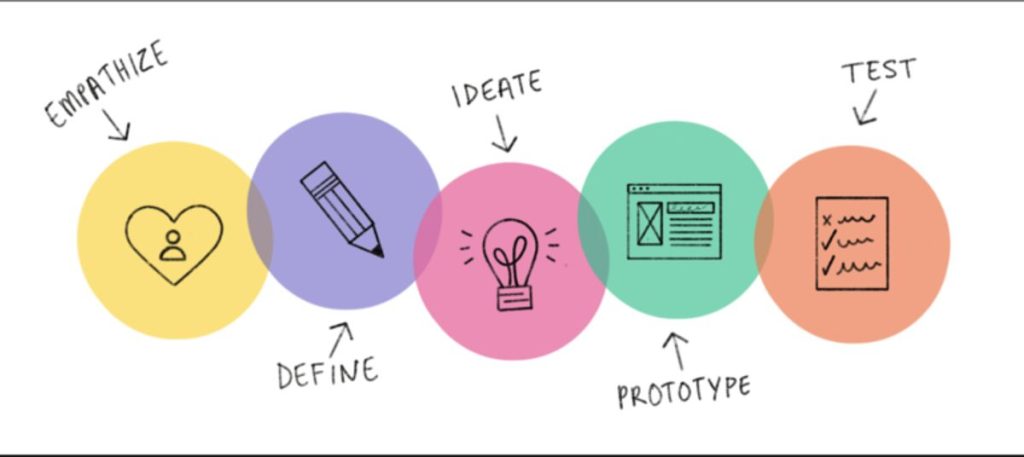Leash training your dog is a fundamental skill that ensures enjoyable and safe walks for both you and your furry friend. While the ultimate goal is to achieve a relaxed, loose leash walk, the journey involves understanding your dog's behavior, using the right gear, and practicing patience and consistency. This article will guide you through various techniques and tips to help you walk your dog with confidence.
Key Takeaways
- Understanding your dog's behavior is crucial for successful leash training.
- Choosing the right gear, such as a suitable leash and harness, can make a big difference.
- Start leash training indoors to minimize distractions and build confidence.
- Gradually introduce the leash and create positive associations with it.
- Patience and consistency are key to mastering loose leash walking.
Understanding Your Dog's Behavior
Recognizing Excitement and Anxiety
Dogs often show excitement through wagging tails, jumping, and barking. On the other hand, anxiety can manifest as panting, pacing, or hiding. Recognizing these signs is crucial for effective leash training.
Reading Your Dog's Body Language
Understanding your dog's body language can help you respond appropriately during walks. Look for signals like ear position, tail movement, and overall posture. These cues can indicate how your dog is feeling and help you adjust your training methods accordingly.
Common Distractions During Walks
During walks, dogs can be easily distracted by various stimuli such as other animals, people, and even certain sounds. Identifying these distractions can help you manage your dog's behavior better and keep the training session productive.
Positive reinforcement improves leash manners, strengthens bond, and creates enjoyable walks with your dog.
Essential Gear for Leash Training

When it comes to leash training, having the right gear can make all the difference. Choosing the right leash is crucial for both comfort and control. A four to six-foot leash is ideal for most training scenarios. This length gives your dog enough freedom to explore while still keeping them close enough to manage.
Harnesses are often preferred over collars because they distribute pressure more evenly across your dog's body, reducing the risk of injury. However, some dogs may respond better to collars. It's essential to find what works best for your dog. Remember, no correction collars!
Treats are a must-have for positive reinforcement. Your dog's absolute favorite treats will keep them motivated and focused during training sessions. Keep a stash handy to reward good behavior immediately.
Fit & Fetch Dog Care offers proven housebreaking solutions for a spotless home. Enhance your bond with your dog through leash training courses emphasizing teamwork and communication.
Here's a quick checklist of what you'll need:
- A four to six-foot leash
- An appropriately sized harness or collar
- Your dog's favorite treats
- An enthusiastic, positive attitude
- Patience
Starting Leash Training Indoors
Starting leash training indoors is a great way to set the foundation for successful walks outside. By beginning in a familiar and controlled environment, you can help your dog feel more comfortable and confident with the leash. Here are some tips to get you started:
Creating a Distraction-Free Zone
When starting leash training indoors, it's important to create a distraction-free zone. This means choosing a quiet area in your home where your dog can focus on the training without being interrupted by other pets, family members, or loud noises. A calm environment will help your dog concentrate better and make the training process smoother.
Using Treats for Positive Reinforcement
Positive reinforcement is key to successful leash training. Use your dog's favorite treats to reward them for good behavior. Whenever your dog responds well to the leash, give them a treat and lots of praise. This will help them associate the leash with positive experiences and make them more willing to cooperate.
Practicing Short Walks Inside
Before taking your dog outside, practice short walks inside your home. Start by letting them get used to wearing a collar or harness and a leash. Let them wear them for short periods of time in the house while you're playing with them or giving them treats. This will help them get comfortable with the feeling of the leash and prepare them for longer walks outside.
Remember, patience and consistency are key. Every dog learns at their own pace, so take your time and celebrate small victories along the way.
Introducing the Leash Gradually
Introducing your dog to the leash gradually is crucial for a successful leash training experience. Patience and consistency are key during this phase, as rushing can lead to anxiety and resistance from your dog.
Mastering Loose Leash Walking
Setting Realistic Goals
It will take time to master, but there are a few key things that will help you and your dog succeed. The first step to set your dog up for success is to choose a location that won’t be overwhelming. Whenever we are teaching a new skill or behavior, we need to start in an environment that is quiet and without distractions so that your dog can focus on learning and mastering their new skill.
Rewarding Good Behavior
For many dogs, a walk is the highlight of their day. It gives them a chance to get some exercise, but for others, the excitement can be overwhelming, where they pull to the point of discomfort. Rewarding good behavior consistently is key to reinforcing the desired walking habits. Use treats, praise, and affection to let your dog know they are doing a great job.
Increasing Distance and Duration
Once your dog has mastered the skill of walking at your side without pulling, you can then introduce longer walks and more varied environments. Progress slowly and choose the places you train carefully. Remember, we want your dog to succeed, so take it slowly and increase the distance and duration of your walks gradually.
Mastering loose leash walking is a journey, but with patience and consistency, you and your dog will enjoy stress-free and joyful walks together.
Overcoming Common Challenges
Dealing with Pulling
One of the most common issues during leash training is pulling. If your dog starts to pull forward or back, stop moving and encourage them back to your side before continuing. Consistency is key here. Use treats and positive reinforcement to reward your dog when they walk beside you without pulling.
Addressing Fear and Anxiety
Fear and anxiety can make leash training difficult. Create a calm environment and gradually introduce your dog to new experiences. Breaking old habits and forming new ones, new associations and new ways of behaving is half the battle. Once you get started it’s so much easier to keep improving. Consider signing up for a free online course to improve leash manners, enjoy walks, and manage separation anxiety with your dog.
Managing Overexcitement
Overexcitement can lead to erratic behavior on walks. To manage this, practice using obstacles you find on your walks, such as planters, trees, or even bike racks. Not only are you building excellent walking skills, but you’re teaching your dog to ignore the objects you’re moving around and building up their confidence in novel situations.
Setting your dog up to succeed is essential if you want to enjoy relaxing walks together throughout your life. Remember, things can change quickly, so always pay attention to the world around you and be ready to take action when needed.
Advanced Leash Training Techniques
Training in Different Environments
Training your dog in various environments is crucial for building their confidence and adaptability. Start with familiar places and gradually introduce new settings. This helps your dog learn to stay calm and focused, no matter where you are. Consistency is key to ensuring your dog feels secure and understands what is expected of them.
Introducing Distractions Gradually
When introducing distractions, begin with minimal stimuli and slowly increase the complexity. This method allows your dog to adjust without becoming overwhelmed. Use treats and positive reinforcement to reward your dog for maintaining focus. Remember, the goal is to unleash the joy of a well-behaved dog, even in the presence of distractions.
Practicing with Other Dogs
Practicing leash training with other dogs can be highly beneficial. It teaches your dog to remain calm and behave appropriately around their peers. Start with controlled interactions and gradually move to more dynamic settings. This not only improves leash manners but also helps in building a stronger bond with your dog.
Advanced leash training techniques are about transforming fear into trust, creating safe environments, and strengthening the bond with your dog.
Maintaining a Positive Attitude
Training your dog can be a test of patience. Breaking old habits and forming new ones takes time, but consistency is key. Remember, every small step forward is progress. If your pup has a moment of pulling or disobedience, avoid getting frustrated or angry. Stay calm, redirect their focus, and continue with the training.
Every achievement, no matter how minor, deserves celebration. Did your dog walk a few steps without pulling? That's a win! Use your dog’s absolute favorite treats to reward them. This not only reinforces good behavior but also makes the training process enjoyable for both of you.
It's easy to get frustrated when things don't go as planned. However, maintaining a positive attitude is crucial. Take breaks when needed and remember why you started this journey. Your enthusiasm and positive attitude will reflect on your dog, making the training sessions more effective.
Training your dog is a journey, not a race. Enjoy the process and love your dog every step of the way.
Safety Tips for Leash Training
Leash training is an essential part of ensuring your dog's safety and well-being during walks. Here are some tips to keep in mind:
Ensuring Your Dog's Health
Before starting any leash training, make sure your dog is in good health. Regular vet check-ups can help identify any underlying issues that might affect their ability to walk comfortably on a leash. A healthy dog is a happy dog!
Avoiding Hazardous Areas
When you're out for a walk, be mindful of your surroundings. Avoid areas with heavy traffic, broken glass, or other potential hazards. Stick to well-lit, familiar paths to ensure both you and your dog stay safe.
Using Reflective Gear for Night Walks
If you plan on walking your dog at night, it's crucial to use reflective gear. This includes reflective leashes, collars, and even vests. These items will make you and your dog more visible to drivers and other pedestrians, reducing the risk of accidents.
Remember, leash walking doesn't require a lot of equipment up front. A 6-foot flat leash and a y-front harness for safety are great starting points. You'll also want to stock up on your dog's favorite treats to make the experience positive and rewarding.
Building a Strong Bond with Your Dog
Spending Quality Time Together
Spending quality time with your dog is essential for building a strong bond. This can include daily walks, playtime, and even just relaxing together. Positive reinforcement training can help you build your puppy’s confidence, deepen your bond with one another, and encourage him to trust you in new situations. One easy way to try this is by rewarding your dog along the way with his favourite treats or kibble.
Understanding Your Dog's Needs
Understanding your dog's needs is crucial for fostering a harmonious bond with your furry companion. Pay attention to their body language and behavior to recognize what they need at any given moment. This can help you address any issues promptly and effectively, ensuring your dog feels safe and loved.
Creating a Trusting Relationship
Creating a trusting relationship with your dog involves consistency, patience, and a lot of love. Setting your dog up to succeed is essential if you want to enjoy relaxing walks together throughout your life. Remember, things can change quickly, so always pay attention to the world around you and be ready to take action when needed.
Breaking old habits and forming new ones, new associations and new ways of behaving is half the battle. Once you get started it’s so much easier to keep improving.
Conclusion
Leash training your dog can be a rewarding and enjoyable experience for both you and your furry friend. By starting with the basics and gradually increasing the complexity, you can help your dog become more comfortable and confident on walks. Remember to use positive reinforcement, be patient, and keep the training sessions fun and engaging. With the right techniques and a positive attitude, you'll soon be walking your dog with confidence and ease. Happy walking!
Frequently Asked Questions
Why is my dog nervous when I introduce the leash?
The movement of the leash can be startling for some dogs, making them feel nervous. It's essential to introduce the leash gradually and use positive reinforcement techniques to build a positive association.
What type of leash should I use for leash training?
A four to six-foot leash is ideal for leash training. Avoid correction collars and opt for an appropriately sized harness or collar.
How do I start leash training my dog indoors?
Begin in a distraction-free zone in your home. Use high-value treats to reward your dog at your side and start with short indoor walks to build confidence.
What should I do if my dog pulls on the leash?
If your dog pulls on the leash, stop walking and wait for them to return to your side. Reward them when they do so to reinforce good behavior.
How can I help my dog overcome anxiety during walks?
Ensure your dog is in good health and use positive reinforcement techniques to encourage them to accept the collar and leash. Gradually increase the distance and duration of walks to build their confidence.
Is a harness better than a collar for leash training?
A harness is generally better for leash training as it provides more control and is safer for your dog's neck. However, an appropriately sized collar can also be used.
How can I manage my dog's overexcitement during walks?
Start by keeping a safe distance from other dogs and gradually allow your dog to get closer in subsequent walks. Use treats and positive reinforcement to keep them engaged and calm.
What are some essential items needed for leash training?
You'll need a four to six-foot leash, an appropriately sized harness or collar, your dog's favorite treats, a positive attitude, and patience.



